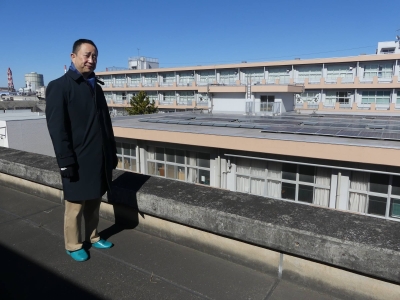Electricity consumption by data centers will more than double by 2030, driven by artificial intelligence applications that will create new challenges for energy security and CO2 emission goals, the International Energy Agency (IEA) said Thursday.
At the same time, AI can unlock opportunities to produce and consume electricity more efficiently, the IEA said in its first report on the technology's energy implications.
Data centers represented about 1.5% of global electricity consumption in 2024, but that has increased by 12% annually over the past five years. Generative AI requires colossal computing power to process information accumulated in gigantic databases.
Together, the United States, Europe, and China currently account for about 85% of data center consumption.
Big tech companies increasingly recognise their growing need for power. Google last year signed a deal to get electricity from small nuclear reactors to help power its part in the artificial intelligence race.
Microsoft is to use energy from new reactors at Three Mile Island, the site of America's worst nuclear accident, when it went through a meltdown in 1979. Amazon also signed an accord last year to use nuclear power for its data centers.
At the current rate, data centers will consume about 3% of global energy by 2030, the report said.
According to the IEA, data center electricity consumption will reach about 945 terawatt hours (TWH) by 2030.
"This is slightly more than Japan's total electricity consumption today. AI is the most important driver of this growth, alongside growing demand for other digital services," said the report.
One 100-megawatt data center can use as much power as 100,000 households, the report said. But it highlighted that new data centers, already under construction, could use as much as 2 million households.
The Paris-based energy policy advisory group said that "artificial intelligence has the potential to transform the energy sector in the coming decade, driving a surge in electricity demand from data centers worldwide, while also unlocking significant opportunities to cut costs, enhance competitiveness, and reduce emissions."
Hoping to keep ahead of China in the field of artificial intelligence, U.S. President Donald Trump has launched the creation of a "National Council for Energy Dominance" tasked with boosting electricity production.
Right now, coal provides about 30% of the energy needed to power data centers, but renewables and natural gas will increase their shares because of their lower costs and wider availability in key markets.
The growth of data centers will inevitably increase carbon emissions linked to electricity consumption, from 180 million tonnes of CO2 today to 300 million tonnes by 2035, the IEA said. That remains a minimal share of the 41.6 billion tonnes of global emissions estimated in 2024.
















With your current subscription plan you can comment on stories. However, before writing your first comment, please create a display name in the Profile section of your subscriber account page.